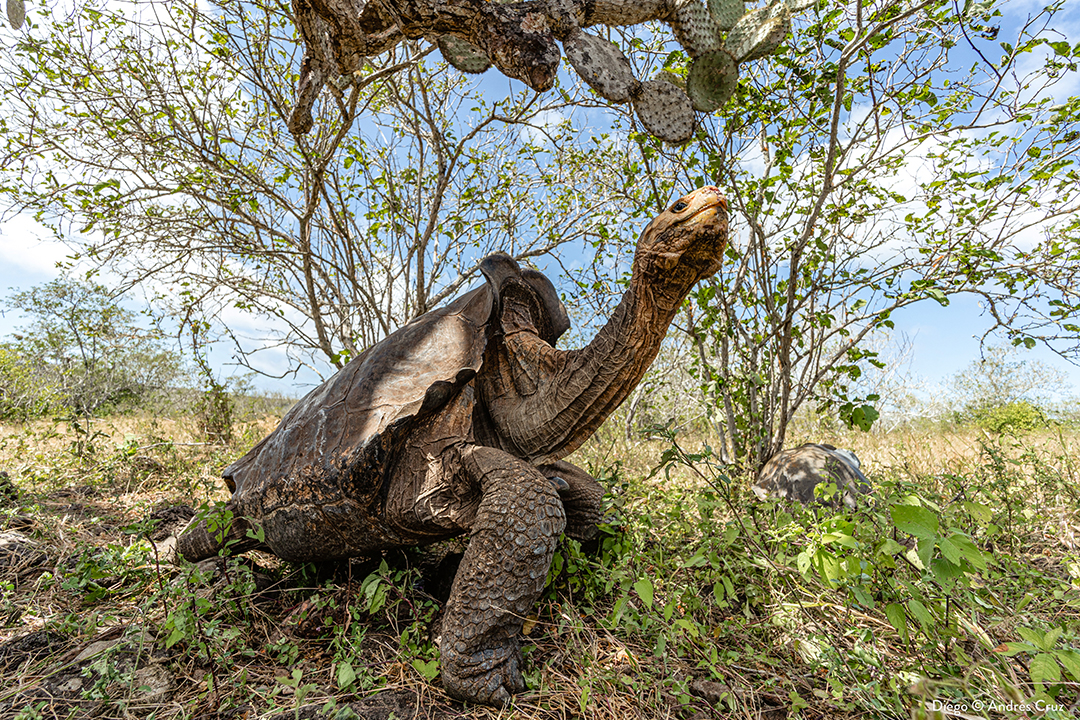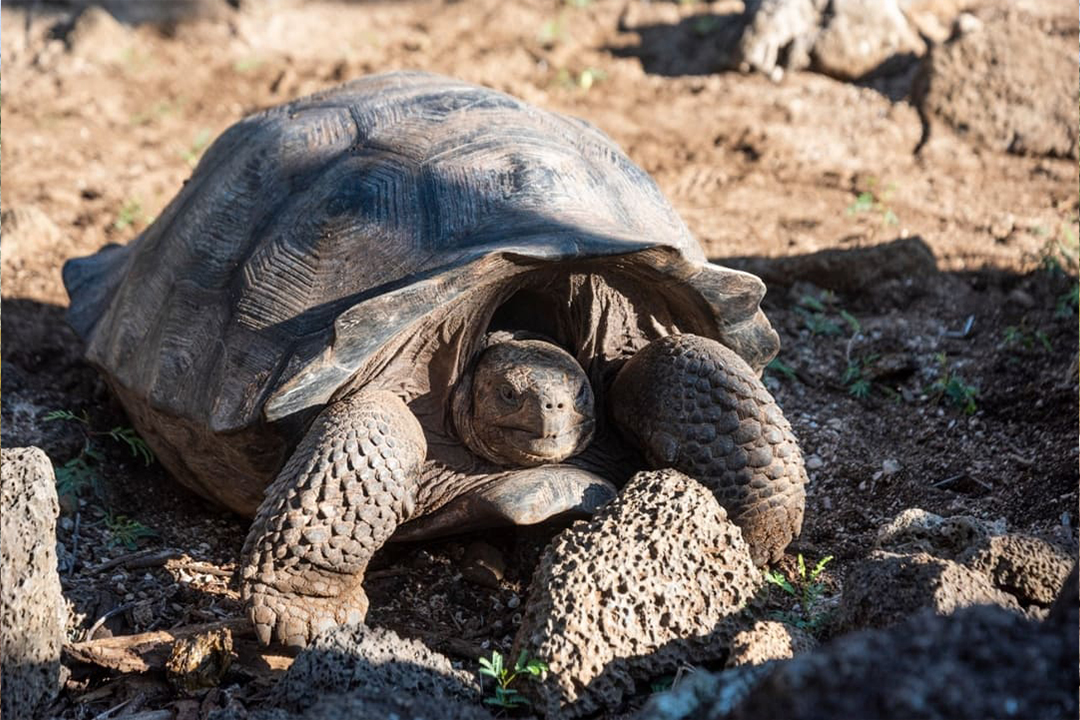Rewilding Giant Tortoises
Giant tortoises in the Galápagos Islands have been the focus of one of the most successful endangered species rewilding efforts in history. Over the last 60 years, more than 9,000 have been reared in captivity and released to the wild to reverse the decimation of populations caused by centuries of exploitation. As “ecosystem engineers,” these endemic mega-herbivores have restorative impacts on the terrestrial ecosystems and biological diversity of Galápagos. Despite this progress, today’s Galápagos giant tortoise populations are still just 10% of their historical numbers and occupy only 35% of available habitat. Alongside our partner the Galápagos National Park Directorate, our goal in the coming decades is to restore giant tortoise populations to their historical range and numbers across the archipelago via our program Iniciativa Galápagos (formerly known as the Giant Tortoise Restoration Initiative).
-
Project Location
Galápagos Islands
-
Program Launch
1965
-
Juveniles Rewilded
10,000+
-
Partner
Galápagos National Park
Why it Matters
- Each tortoise eats more than 500 lbs. of vegetation annually. Through their grazing and seed dispersal, tortoises are the architects of the healthy terrestrial ecosystems in Galápagos.
- More unique species of tortoises and turtles occur per square mile in Galápagos than anywhere else on Earth. Tortoise conservation in Galápagos strongly affects global tortoise and turtle diversity.
- Innovative approaches to conservation including de-extinction and trophic rewilding are being advanced in Galápagos to the benefit of endangered species conservation efforts globally.
- Thanks to their popularity with visitors, Giant Tortoises are a major economic force for the ecotourism-based Galápagos economy.
Accomplishments

Española: From near extinction to recovery
In the 1960s with a surviving population of just 15 individuals, the Española giant tortoise (Chelonoidis hoodensis) was on the brink of extinction. Through eradication of the primary threat to their habitat — goats — and the repatriation of offspring back to their home island, the population is now thriving and reproducing naturally. The 15 original adults were returned to Española Island in June of 2020, joining a population of 2300+ tortoises and marking the end of one of the most successful wildlife and ecosystem restoration projects in the history of the world.
Pinzón: Repatriation of more than 1,000 tortoises
The Pinzón giant tortoise (Chelonoidis duncanensis) was on the path to extinction, with 100-200 adult tortoises and no surviving hatchlings for more than 80 years due to predation by introduced black rats. Collection of tortoise eggs from natural nests, rearing of young in captivity, and repatriation of more than 1,000 juvenile tortoises have restored Pinzón Island. In 2012, black rats were eradicated, and tortoise hatchlings began to appear once again after more than 100 years. The Pinzón giant tortoise population is now close to sustaining itself in the wild.


Restoring lost populations through lineage recovery
The Floreana and Pinta giant tortoise species are extinct. However, our recent discovery of tortoises with mixed Floreana or Pinta ancestry on Wolf Volcano on northern Isabela Island jumpstarted efforts to restore tortoise populations on both islands with tortoises with partial ancestry of the extinct species. We are currently working to breed and rear these mixed-ancestry tortoises at our Giant Tortoise Breeding Center on Santa Cruz Island.
Get Involved
Take Action for Galápagos, Right Now
Our generous community of supporters is the cornerstone of our efforts to preserve this ecological wonder of the world.



More from Galápagos Conservancy
Keep Exploring
Our Efficiency
78%
Direct conservation and grants investments
18%
Fundraising
6%
Management





